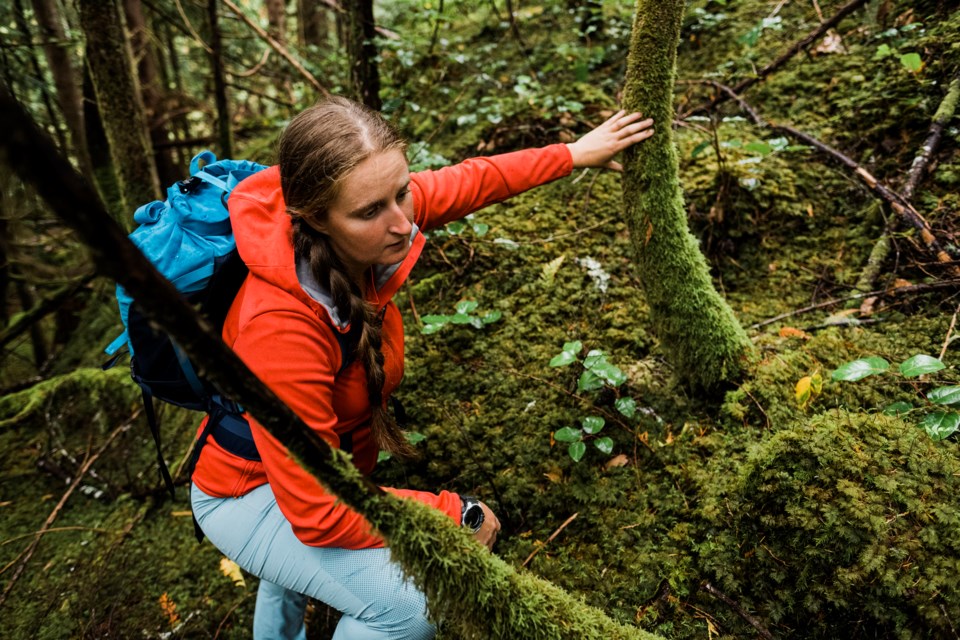We all want to get out into the backcountry when we can, but none of us wants to end up hurt — or worse — on our next excursion.
Data from the BC Search and Rescue Association shows that the top three reasons adventurers call search and rescue in British Columbia are: injury, getting lost and disoriented, and exceeding abilities, according to Sandra Riches, executive director of BC AdventureSmart.
She said that people often get caught up in the excitement of exploring and forget to prepare fully.
To avoid dangerous pitfalls, BC AdventureSmart promotes the three Ts: Trip planning, Training, and Taking the essentials.
“Getting lost and disoriented can be mitigated, or it can not happen at all, when people trip plan and have navigational skills and route-finding ability,” Riches said. “They have the knowledge and the decision-making skills, and the tools and the equipment, and they know how to use it all together to make informed decisions about risk management.”
Trip planning
Adequate trip planning will help set the stage for safe travel. Whether devising an adventure with friends, family or going at it alone, Riches said that letting others in during the planning stage will help ensure that everyone knows what they are getting into.
“Let's say everyone's a part of that process, and they're having conversations and discussions about where they're going,” said Riches. “They're checking maps or looking online about where they're going to go for this adventure and researching it prior to see what gear they need, abilities, and skills. How do we access this terrain? Is this terrain meeting our abilities as a group, as group dynamics? What’s our destination?”
Training
Riches says that it's essential to ensure you are physically ready for any kind of extreme sports in the backcountry and know what you are really getting yourself into. Commonly, people head out only to discover while on their journey that the trip was more difficult than they had initially thought.
Communicating with your crew and being honest about your physical capabilities — and limitations — is one of the best ways to keep the trip from becoming dangerous.
“Making that decision on the trail to maybe turn around and save it for another day can be some of your best outdoor skills that you apply as well,” said Riches.
Taking the essentials
Making sure you have all the essential equipment one needs for a deep woods excursion is also paramount.
“Everything from a light source, fire making kit, a signalling device of sorts — which can be a whistle or mirror to signal to aircraft — extra food and water, clothing, extra layers, navigation and communication.. a first aid kit, knowing how to use it and emergency shelter, a utility knife of sorts and sun protection.”
If things still go wrong
Even with the best effort, getting lost can still happen.
Riches said that instead of moving in hopes of finding civilization, the organization advises that people stay exactly where they are.
Stop, Think, Observe, Plan (STOP), she said.
She said that people often try to figure out their own rescue plan under severe stress and panic.
Often they will find a body of water such as a river and assume that following it will lead them to civilization. However, this is a common mistake and can prove difficult for search and rescue teams working to locate an individual or group.
“Everyone needs to stop moving. So, stop. Stay in that one location. Make sure it's a safe location," she said.
If you have let others know when to expect you back, they will send for help when you don't return on time.
This is another reason proper preparation for any excursion is necessary.
“Then you're observing for hazards,” said Riches. “You're looking around to make sure it's a safe space for you to create a shelter and stay in that location. And then you get to plan [how you are going to continue taking care of yourself while you wait for search and rescue]. You're going to pull out the layers from your pack that you brought. You're going to maybe address any first aid...have a little snack, have some water. Your planning goes into place, but you're not moving.”
Fall means change
Summer is quickly fading to autumn.
Folks who head out on a hike in the early fall can forget that this means changes for their trip.
“Subjects often say, ‘Man, we were so surprised how dark it was out there and how cold we were and how much we wished we had a really good light source," Riches said.
She said to know how long it will be light out, prepare for that, and bring layers for weather fluctuations.
Find more advice on staying safe on the AdventureSmart website.




